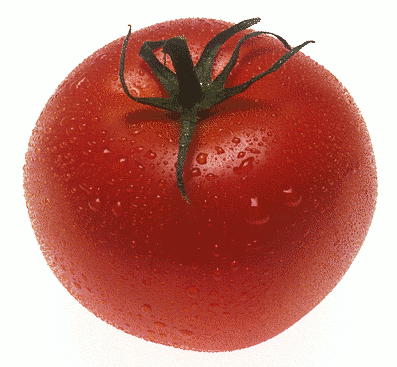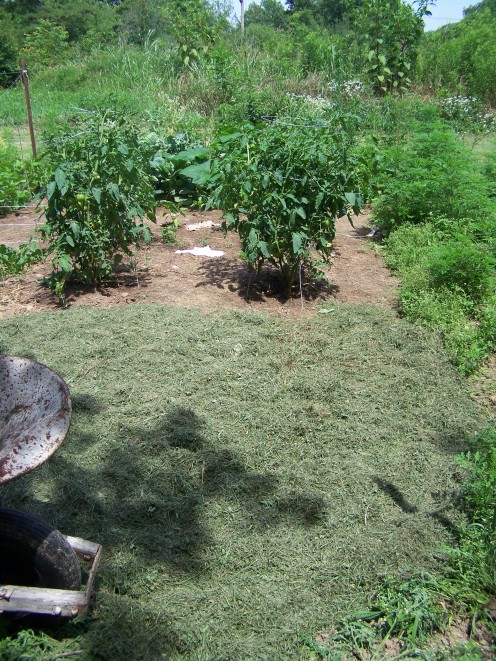How to Grow Organic Tomatoes Successfully

Have you ever wondered how to grow tomatoes? Organic growing is not hard. Tomatoes are easy to grow and depending on the type you choose, offer copious amounts of fresh fruit. This is how I grow our tomatoes and each year we have more than enough of their fruity goodness.
Read on for a few tips on how to grow delicious, organic tomatoes!
© Copyright Notice ©
My photographs are mine, taken by me, with my camera. You may use them for personal reasons (desktop backgrounds, personal websites or you can print them for personal use.)
If you choose to use them on websites I require a link back to my HubPages. You may link to my profile or to one of my Hubs.
You may not use them without my permission or for profit.
I sell my art and if you are interested in purchasing it send me a message.
ALL of my articles are MINE and you may NOT use them for anything but reading on my page.
A Cheap Garden Raised Bed
If you cannot dig in your ground, construct raised beds out of stone, wood, or even brush. The main thing is to build something that will hold the piled soil in the bed. Old twigs and even hard earth can be used to build up the sides of your raised beds.
Try lining the entire raised bed (the sides too) with masses of dried leaves or grass clippings. Grass clippings, especially when added wet, provide real holding power for the added soil.
Now all you do is fill the raised bed with good soil. Water it well and allow the soil to drain before planting in it.
If you take care with this method, even organic yard waste can be attractive in an informal garden.

Harvesting your Tomatoes.
I allow my tomatoes to ripen on the plant. I do mean ripen. My trick is to let them sit until they are close to falling off. But you need to get them before they start to turn sour/rank. Tomatoes allowed to ripen on the vine, develop a flavor that no other tomato can compare to. I was amazed at the difference a day or two could make in their flavor.
For slicing tomatoes and those you intend to sell at farmer's markets, pick when still a bit firm, but not hard. The more ripe they are when picked, the quicker they will spoil. This is not a problem if you intend to eat them right away or can/cook/dry them.
Saving Tomato Seed.
It is really easy to do this. Pick the fruits you like the best, scoop out the seeds. They will be in a mass. Use your fingers to break up the goo.
Place the tomato seeds in a glass of clean water and allow them to sit, covered, in a dark area of your house.
Everyday, if possible, stir the mixture and recover. They will start to stink as they ferment. After a week, rinse the seeds under warm water and remove all the excess goo.
Spread the seeds in a single layer on a towel or piece of absorbent paper. Allow your seeds to dry for several days. After they are dry, place them into a paper envelope. Avoid using plastic as this can trap moisture and cause mold.
Label and store your heirloom seeds in a dark, cool place. I use my cupboard.
Choose the Tomato Variety you Need.
Being so popular, tomatoes come in many shapes, sizes, colors, and tastes. Four words to remember are Indeterminate, Determinate, Heirloom and Hybrid.
Indeterminate tomatoes produce their fruit over a long season. They continue to produce until cold weather kills them.
Determinate tomatoes put off one or two massive loads of fruit. The plants stop producing after that.
Heirloom varieties are those that will come pretty true from seed. This means you can save the seed from the best fruits and replicate the plants you grew the year before. There is always variation in one form or another, seed saving is an art and a skill.
Hybrid plants will not come true and you really do not know what to expect from growing out their seeds. Unless you are a genetic smarty pants, that is.
The amount of fruit to expect from either kind is dependent on variety and growing conditions.
I suggest growing both determinate and indeterminate kinds so you have lots to put up and many for fresh eating.
In plants you want to save seeds from, grow different types of tomatoes away from each other to prevent cross-pollination.
I usually avoid hybrids but this is personal choice.
Preparing the Soil.
Tomatoes thrive in rich, moist soil. When using organic products like well-composted manure and worm castings, you will produce plants with lots of fruit and not too much foliage. A side dressing of nitrogen (aged chicken manure) is still beneficial for growing plants.
My beds are tilled and then built up with composted chicken manure and goat manure. The manure is mixed with old weeds and leaves before composting.
*NOTE: I only till once. When I first set my gardens out. Our soil is hard and it makes it easier to work with if tilled the first time. I till compost into it, then go on with my deep mulch practices. I never have to till the garden a second time.*
Worm castings from red wigglers are also useful in feeding your tomato plants. I make a worm poop tea by taking a cup, or more of worm castings, a few tablespoons of molasses and mixing them into a few gallons of rain water. I aerate this with an aquarium air pump for several days. I use the fertilizer when I see frothy stuff forming on the tea. It shouldn't smell sour or nasty.
I water the plants and the root zone, soaking the area with the tea. I did this weekly and had great results.
Mulch, Mulch, Mulch!
To keep moisture content in the soil stable and to prevent weeds, I put down several inches of organic mulch in the entire tomato plant bed. I do this from the time I set the small plants out. Simply pull back some mulch, plant the tomato seedlings and then carefully push the mulch back around the plants. Avoid touching the mulch to the plants as this may cause rot. I leave about two inches of soil around the tomato stem bare.
Plants that show yellowing leaves will usually benefit from a bit of nitrogen fertilizer.
Tomato Plant Pest Treatment.
Your tomatoes will possibly fall under the attack of tomato hornworms, aphids, whiteflies, rabbits, deer, chickens, and other nasties.
I keep pest under control by allowing bantam chickens to pick through the tomatoes. When the fruits start to ripen, the chickens are removed because they will eat them!
If an insect attack comes, I use neem oil to carefully treat the plants. I do not spray the blossoms with the neem. I like to water the plants from the top and then I douse the mulch with the neem oil. In severe pest infestations, careful application of neem to the foliage and stems should prevent your honeybees from dying out.
There are people that dust their plants with food-grade diatomaceous earth as well.
For large insect pests, try hand-picking and feeding them to your chickens.
Disease Prevention in Tomatoes.
Tomatoes can be kept pretty much disease-free by rotating your crops and providing excellent air-flow. Keep plants off the ground, try staking or trellising them. Prune away any weakened branches and foliage. Good soil and healthy starter plants will also keep your crops safe.
Keeping plants mulched and well-watered will prevent stress. Water plants deeply so they send down strong roots. The mulch will keep your water bill down as well.
∞
A Few Helpful Products
Find Organic Seeds and Pest Control on Ebay and Amazon!









